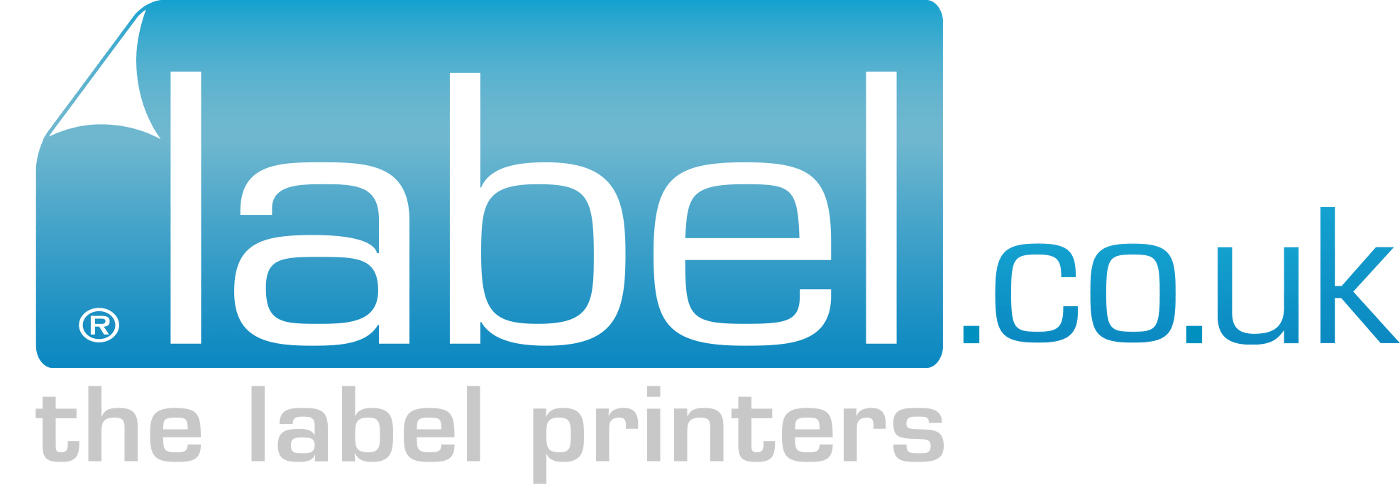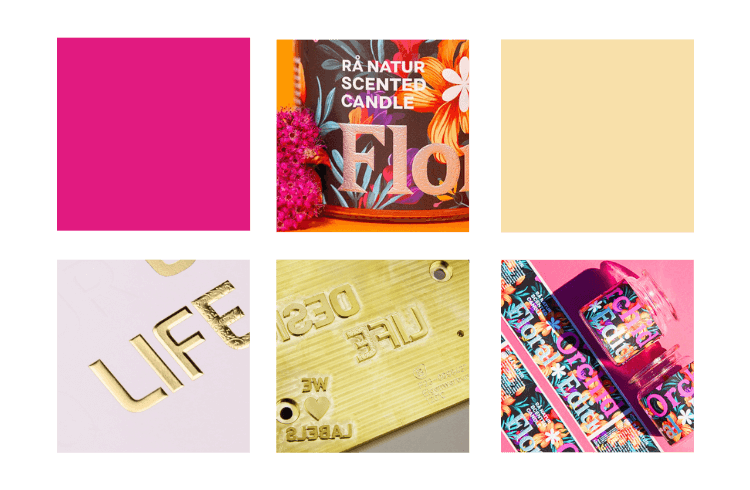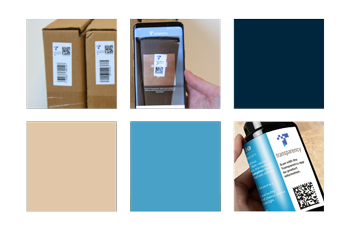06 November 2024
Veganuary Is around the Corner
In recent years, trying certain things – or quitting them – for a month has become a trend. This concept is ideal for people who would like to try something new, but are not ready to commit to it fully.
Setting a limited time frame creates an environment where you can fall back into old habits without feeling guilt or shame. Thus, trends such as not shaving in November (No-Shave-November), not consuming alcohol in January (Dry-January), and quitting all animal-related products in January (Veganuary) have come into existence and are becoming more and more popular.

Why Does Veganuary Work?
Of course, January is a popular month for changing habits. Whilst setting New Year’s resolutions, deciding to go without alcohol or meat for a month is particularly appealing. Because of the negative effects of mass husbandry vegetarian and vegan lifestyles have become more attractive. Many people are curious to try new recipes, want to be more conscious about the products they buy, and aspire to make a positive impact on the environment. Therefore, it comes as no surprise that 2024 marked the 10th anniversary of Veganuary in the UK. The initiative promotes a plant-based diet and is dedicated to protecting the earth and all who inhabit it (Veganuary). An initiative as meaningful as this naturally attracts more and more people, who pledge to give a vegan diet a chance.
So, how do you make sure all these veganism newbies buy your products and not your competitors’? Here are five tips!
1. Get Inspired
The offer of vegan products grows steadily. While this means the competition becomes fiercer, it also creates more potential for inspiration. Research the most successful brands in the industry and analyse their strategies. This way you can use those learnings as a blueprint for your project.
2. Grab Attention
Use all channels at your disposal to advertise your products. You can create social media posts to present your products aesthetically and increase awareness. If you have a website, consider publishing blog articles, interviews with specialists from the industry, or something else that offers valuable information. Don’t forget to initiate collaborations with supermarkets or local retailers too.
3. Communicate Benefits
Many plant-based products are rich in fibre and protein, a quality that consumers love! So, do not shy away from communicating such benefits on your labels and packaging. They can create effective incentives for consumers to choose your products. However, you should not use such wording on your products if it is not true, of course. Similarly, if your products are randomly-vegan it is worth considering if advertising with their vegan nature is really beneficial or not (Stremmel et al.).
What Does Randomly-Vegan Mean?
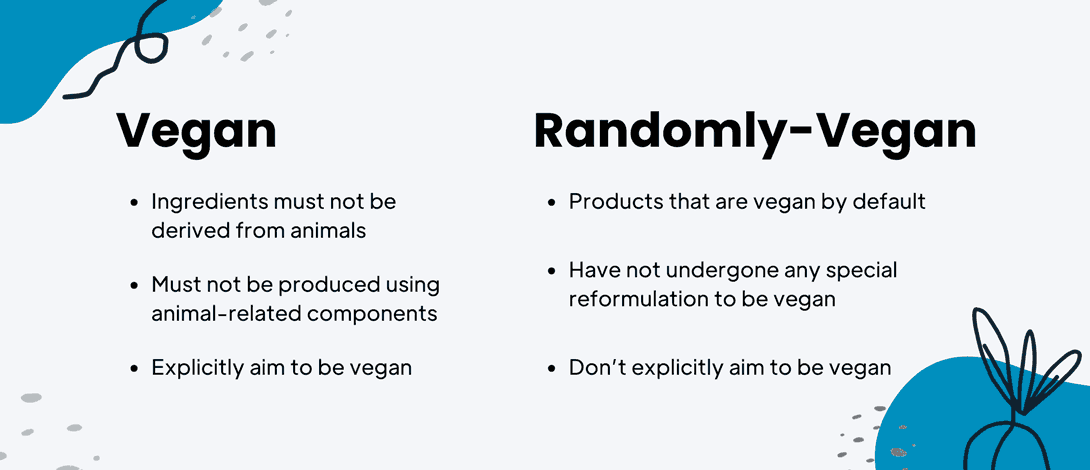
4. Choose Your Label Wisely
There are different conventions for communicating that your products are vegan. The most common wordings are ‘plant-based’, ‘free from’, and ‘vegan’. Be careful to use the right wording for your products. Pay special attention to the difference between allergen and dietary labels. Only if a product does not contain any animal-related ingredients and can guarantee there is no chance for cross-contamination can it be labelled ‘free from’. In this case, it is an allergen label and provides vital information for people with allergies. In all other cases, including ‘vegan’ or ‘plant-based’ on your label is the right alternative (Bambridge-Sutton).
Some studies even show that certain wordings can shape consumer expectations about taste and sustainability, ultimately influencing purchasing decisions. You should consider such factors as well (Ruby et al.).
5. Less Is More
Veganism is all about minimalism: minimalising meat consumption, minimalising one’s environmental impact, and often minimalising other aspects of consumerism as well. Therefore, mirroring this approach in your label and packaging design is a way to appeal to your vegan or vegan-curious audiences.
Creating the perfect design is not always easy. Our professional graphic designers are happy to help you in this enterprise.
Vegan Certification
You can get different certifications for your vegan and vegetarian products. These certificates give your products a special sense of authenticity and can create further incentives for consumers to buy your produce. The most prestigious and common certification of this kind in the UK is awarded by the Vegetarian Society. They accept applications from which they then judge whether a product is accredited with their trademark or not. For other markets (e.g. Europe, Australia, Canada etc.) other certifications are more common.
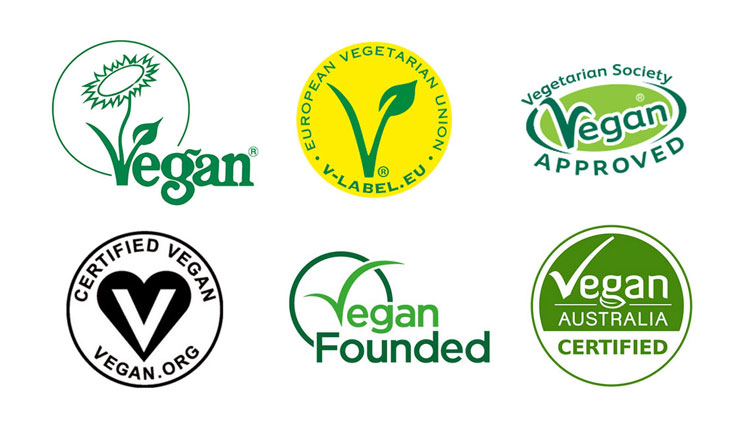
Pannell, David. “How Do You Get Vegan Certified?.” Vegan Business Tribe, 19 May 2024, veganbusinesstribe.com/how-do-you-get-vegan-certified/.
Types of Vegan Products: A Quick Guide
A multitude of vegan products has emerged on supermarket shelves over the last decade. An increasingly health- and environmentally-conscious attitude is surely responsible for this. Now, we can differentiate between several types of vegan products. Some are vegan by default. They are called randomly-vegan (see. Fig. 1). All produce that undergoes reformulation to eliminate animal-related ingredients from the process is per definition vegan – as opposed to randomly-vegan.
Other products imitate the look and taste of products traditionally made from animals. We call these products meat substitutes and their popularity keeps growing.
Whether you should include the term ‘vegan’ in your packaging also depends on where you want to steer your customers’ expectations. Some products are expected to be vegan: e.g. jam, hummus, and other spreads. This expectation often leads to the assumption that the product is also healthy. Now, with a vegan label, this phenomenon can be incurred. Even if consumers consider a product rather unhealthy, they will likely change their minds if the product has a vegan label. Assumptions such as this can lead to overconsumption of certain produce, which should be avoided (Stremmel et al.).
Conclusion (TLDR)
The vegan trend is booming. Its growth is not likely to subside any time soon. On the contrary. With an increasing awareness of the health and environmental advantages of vegetarian and vegan diets, the market will keep expanding.
Therefore, you need to create awareness for your products.
Research which tactics work well for the marketing of vegan products.
Use different channels to advertise for them.
Communicate benefits effectively and transparently, without using the word ‘vegan’ just to join the hype.
Remember who you are selling your products to. Most people interested in plant-based diets probably respond to minimalist packaging that suggests a small environmental impact. Keep that in mind while creating your label designs.
Sources
Bambridge-Sutton, Augustus. “‘vegan’ or ‘Free-from’? Tackling Lack of Awareness of the Difference between Allergen and Dietary Labelling.” Foodnavigator.Com, William Reed Ltd, 26 Mar. 2024, www.foodnavigator.com/Article/2024/03/26/many-consumers-unaware-vegan-labels-don-t-mean-free-from.
Ruby, Matthew, et al. Vegetarian, Vegan, or Plant-Based? Comparing How Different Labels Influence Consumer Evaluations of Plant-Based Foods, 5 Dec. 2023, https://doi.org/10.31234/osf.io/xvz64.
Stremmel, Gesa, et al. “Vegan labeling for what is already vegan: Product perceptions and consumption intentions.” Appetite, vol. 175, Aug. 2022, p. 106048, https://doi.org/10.1016/j.appet.2022.106048.
Veganuary, veganuary.com/wp-content/uploads/2024/03/Campaign-Report-2024-UK.pdf. Accessed 31 Oct. 2024.

Katharina Crusius
Marketing
Our Newsletter
Our monthly newsletter keeps you updated about relevant topics from the label printing universe and beyond. Every month you get free content with exclusive information about trends in the industry, new printing technologies as well as tips for your label design, printing files and more!
